Clarke, 1953
‘Sweetheart’, S. ×hyacinthiflora
Clarke 1953; D VI
syn. – ‘SweetHeart’
{S. ×hyacinthiflora ‘Alice Eastwood’ × ? }
Clarke, US Pl. Pat. No. 1128 [Sept. 16, 1952] – as S. vulgaris; Wister, Lilacs for America, 42 [1953] – as S. vulgaris; Clarke, Cat., 34 [1954] – as s. vulgaris; Fiala, Lilacs, 58, 104, 206, 258 [1988]; Lilacs – Quart. Jour. 24(2): front cover ill. [1995]; in litt., Holetich to Vrugtman, correction ofcolor determination to D I & VI, 29 March 2015; Photo on Jorgovani/Lilacs 2015 DVD.
cultivar name presumed registered 1953; name established and accepted.
Международный регистр названий культиваров рода Syringa L.
The combination of coloring and the contrast between its deep ruddy mauve buds and nearly white flowers is decidedly unusual and unique. The buds are deep Fuchsia purple and the open 20 flowers are the palest possible lavender which seems to be pure white by contrast with the unopened buds. The reverses or backs of the flowers are pale Fuchsia purple but after the flowers have fully opened these do not show, except on close examination.
Flowers bloom freely, opening just after mid-season or rather late, and stay in bloom about three weeks. Fragrance is good. The florets are double but not crowded in the thyrses. The clusters are of medium size and are borne either singly or in forked pairs, well above the foliage on long shoots, which characteristic makes them particularly well adapted for cutting. In general plant structure, this new variety is similar to the well-known Syringa vulgaris. Growth is vigorous and erect, not widespreading.
There is a sufficient quantity of foliage which forms a pleasing contrast to the coloring of the buds and flowers. The bush is somewhat slender and grows to a height of from six to eight feet.
The colors are as follows: Buds.—Fuchsia purple, plate 28 to 28/3, Horticultural Colour Chart of The British Colour Council; or Maerz and Paul Dictionary of Color, Plate 51-K-7. Open flower.—Maerz and Paul, plate 49-A-2. Reverse of flowers.—Pale Fuchsia purple.
WALTER BOSWORTH CLARKE. Авторское описание для Патентной службы США
To call this plant magenta does it a real injustice. The blooms do start as magenta but turn varying shades of pink while the tips of the thyrses remain deep rose. I had pondered about the name of this plant for some time. But in my mind’s eye I recall a nursery catalog sketch that had often appeared two or three decades ago in garden magazines showing a rather prosaic drawing of a bush with Valentine hearts placed symetrically upon it. Until this very year I had never seen this happen on a Sweetheart lilac. Usually the plant, like many double-type lilacs (visually Pres. Grevy) has double thyrses. But this year a real valentine heart appeared on the Sweetheart shrub in my own garden. A third thyrse made an appearance between the other two in such a way as to resemble a true valentine heart. What with the magenta buds at the tips of each pink thyrse, appearing like droplets of blood, I found it fascinating.
CLARE SHORT, Midwest Vice-President, Lilacs Proceedings Vol. 2, No. 4, 1974
D VI Sweetheart
Суитхат , Clarke 1953
Бутоны малиновые. Цветки светло-розовые до белого. с нижней стороны малиново-розовые; крупные, махровые. Соцветия крупные, многовершинные, плотные, прочные, пышные. Листья тускло-зеленые, сердцевидные, сложены по центральной жилке. Кусты высокие, прямые, мало облиственные. Цветет в средние сроки.
«СИРЕНЬ. Коллекция ГБС РАН» И.Б. Окунева, Н.Л. Михайлов, А.С. Демидов, Москва, Наука, 2008

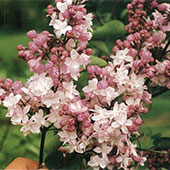
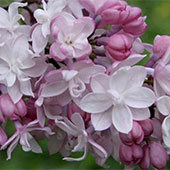
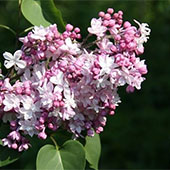
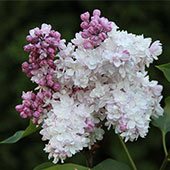
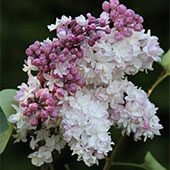
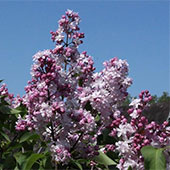
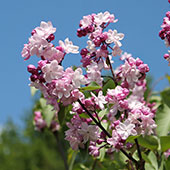
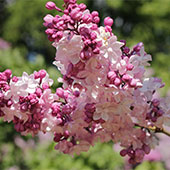

Оставить комментарий
Пожалуйста, зарегистрируйтесь, чтобы иметь возможность оставлять комментарии.